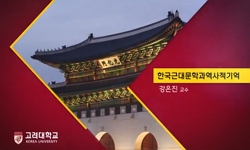A symbol is an expression of an invisible abstract substance using a visible from. Particularly when the invisible substance indicates something sacred, transcendental and divine, the symbol becomes religious. Because the world accessed through symbol...
http://chineseinput.net/에서 pinyin(병음)방식으로 중국어를 변환할 수 있습니다.
변환된 중국어를 복사하여 사용하시면 됩니다.
- 中文 을 입력하시려면 zhongwen을 입력하시고 space를누르시면됩니다.
- 北京 을 입력하시려면 beijing을 입력하시고 space를 누르시면 됩니다.

강증산 천지공사의 종교적 상징체계에 관한 연구 = A Study on the System of Religious Symbolism in Gang Jeung san`s Cheunjigongsa
한글로보기https://www.riss.kr/link?id=A75527824
- 저자
- 발행기관
- 학술지명
- 권호사항
-
발행연도
2006
-
작성언어
-
- 주제어
-
KDC
200
-
등재정보
KCI등재
-
자료형태
학술저널
- 발행기관 URL
-
수록면
103-155(53쪽)
- 제공처
-
0
상세조회 -
0
다운로드
부가정보
다국어 초록 (Multilingual Abstract)
A symbol is an expression of an invisible abstract substance using a visible from. Particularly when the invisible substance indicates something sacred, transcendental and divine, the symbol becomes religious. Because the world accessed through symbols pursues invisible and high dimensional things, the value of symbols is raised higher when they find their meanings in religious phenomena. That is, the core of religious symbolism is that symbols are not regarded merely as symbols. Rather, because people try to approach the realities of religion closer through symbolic expressions, they can participate in the real life when they contact the religious symbols. Here, the faith that one has becomes a precondition for experiencing the universal and ultimate reality through the medium of such religious symbols. The present study examined Gang Jeung san`s record of the Cheunjigongsa(heavenly and earthly works, 天地公事) filled with numerous symbolic expressions, and analyzed the structure of the symbols from the viewpoint of religious symbolism and the characteristics of the expressions. For this, we examined the meanings of symbols such as natural objects, rituals, myths, sentences, figures, place names, buildings, food, articles and colors that are mentioned in the Cheunjigongsa. In addition, this study pointed out that the symbolic system has the belief of Gucheonsangje(九天上帝) and the view of universe of Hucheongaebyeok(後天開闢) as the characteristics of religious symbols and, furthermore, supports the symbolic expression of the traditional Ki(氣) Theory of the Orient. The discussion in this study shows that symbols are used richly in religious expressions by Gang Jeung san, a new modem religionist in Korea, and it is important to interpret these symbols to understand his idea.
동일학술지(권/호) 다른 논문
-
- 한국신종교학회
- 한재훈 ( Jae Hoon Han )
- 2006
- KCI등재
-
- 한국신종교학회
- 원영진 ( Young Jin Won )
- 2006
- KCI등재
-
신종교자료 : 19세기 일본에 있어서 민중종교의 탄생과 그 변혁성 -여래교(如來敎)를 중심으로-
- 한국신종교학회
- 간다히데오
- 2006
- KCI등재
-
- 한국신종교학회
- 김재영 ( Jae Young Kim )
- 2006
- KCI등재




 KISS
KISS


